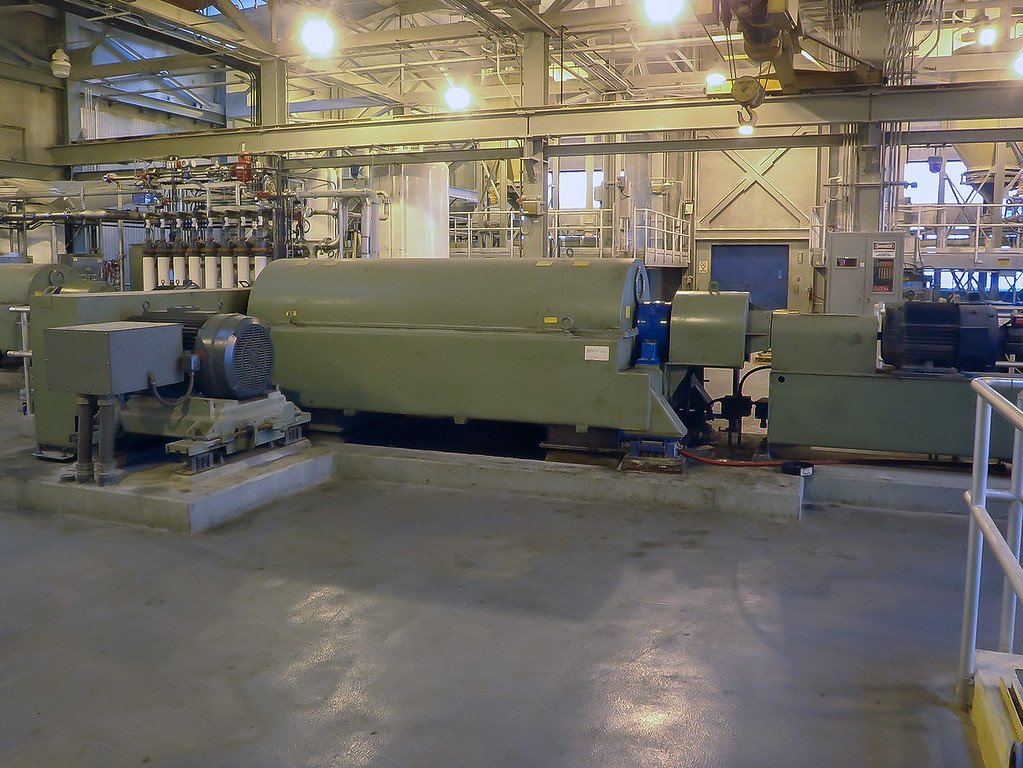Joint Meeting of Essex and Union Counties – Combined Sewer Overflow/Sewage Treatment Plant

The Role of the Joint Meeting of Essex and Union Counties: Combined Sewer Overflow/Sewage Treatment Plant
The Joint Meeting of Essex and Union Counties (JMEUC) Combined Sewer Overflow/Sewage Treatment Plant represents a pivotal piece of infrastructure in the northern New Jersey region. This facility, which serves the wastewater treatment needs of the densely populated areas within Essex and Union Counties, is crucial for maintaining the sanitary conditions, public health, and environmental quality of these local communities. This article delves into the intricate operations, significance, and the future outlook of the JMEUC Combined Sewer Overflow/Sewage Treatment Plant.
Serving a Diverse and Dense Population
Essex and Union counties represent a vital demographic cross-section of New Jersey, with a combined population nearing 1.5 million residents. The area includes bustling urban centers such as Newark, Elizabeth, and their surrounding suburbs. This densely populated region relies on efficient and effective wastewater management services to sustain its quality of life and economic vitality.
The JMEUC facility processes the wastewater generated by these communities, encompassing a variety of residential, commercial, and industrial sources. Consequently, the plant is designed to handle significant volumes of wastewater, reflecting the needs of one of the most densely populated areas in the state.
Volume of Wastewater and Treatment Capacity
The JMEUC sewage treatment plant has a substantial treatment capacity to address the large volume of wastewater produced within its service area. The plant has the capability to manage an average daily flow of approximately 85 million gallons of wastewater under normal operations. During significant rainfall events, the plant is challenged with managing increased volumes resulting from combined sewer overflows (CSOs), which can push the capacity to as much as 200 million gallons per day. This fluctuation is emblematic of the dual-task faced by combined sewer systems – managing both sewage and stormwater.
To meet these demands, the plant incorporates advanced wastewater treatment technologies across several stages:
-
- Primary Treatment: This initial phase involves the physical removal of larger debris and solids from the incoming wastewater. Screens and settling tanks play a crucial role in this stage, capturing materials that could otherwise damage downstream processes or hinder treatment efficiency.
-
- Secondary Treatment: Building upon the primary phase, this step introduces biological processes to further reduce organic contaminants. Aerobic bacteria are employed in aeration tanks to consume organic matter, breaking it down into stable compounds that can be safely discharged or further treated.
-
- Tertiary Treatment: The final treatment phase often includes advanced filtration and chemical processes to remove remaining impurities, particularly nutrients like nitrogen and phosphorus that could contribute to environmental degradation in receiving water bodies. Disinfection through chlorination or ultraviolet light ensures that pathogenic microorganisms are minimized before the treated water is released back into the environment.
Recent Developments and Local News
In recent years, the JMEUC has been at the center of several significant news stories and project initiatives aimed at modernizing and enhancing its operational capacity and environmental compliance.
CSO Long-Term Control Plan
One of the most prominent developments has been the implementation of the CSO Long-Term Control Plan, which outlines strategies to reduce the frequency and impact of combined sewer overflows. This plan, developed in accordance with regulatory requirements set by the New Jersey Department of Environmental Protection (NJDEP) and the Environmental Protection Agency (EPA), includes substantial infrastructure upgrades, green infrastructure initiatives, and increased public outreach efforts.
The plan emphasizes the need for sustainable practices, such as the construction of green roofs, rain gardens, and permeable pavements that can mitigate stormwater runoff at the source. Coupled with traditional engineering solutions like the expansion of storage and conveyance capacities, these projects aim to significantly reduce the environmental footprint of CSOs.
Infrastructure Modernization Projects
Significant investments have been made in recent years to upgrade the plant’s infrastructure. These modernization projects encompass the replacement of aging pipelines, the introduction of state-of-the-art treatment technologies, and the reinforcement of physical structures to bolster resilience against extreme weather events. For instance, the installation of advanced monitoring and control systems enables plant operators to better predict and efficiently manage peak flow conditions, thereby minimizing potential overflows and untreated discharges.
An example of such an initiative is the construction of additional wet weather treatment facilities. These supplemental facilities are designed to handle excess flows during heavy rainfall, ensuring that the plant can maintain its treatment standards even under adverse conditions. By integrating these expansions, the JMEUC strengthens its capacity to safeguard public health and the environment.
Community Engagement and Public Outreach
A critical aspect of the JMEUC’s operations involves active community engagement and public education campaigns. The organization recognizes that public awareness and cooperation are essential components of effective wastewater management.
Educational Programs and Workshops
The JMEUC has launched numerous educational programs and workshops aimed at informing residents about the importance of water conservation, proper disposal of household waste, and the impacts of combined sewer overflows. These initiatives are often targeted at schools, local community groups, and businesses, fostering a collaborative approach to tackling wastewater challenges.
Such educational efforts empower residents to contribute to reducing the burden on the sewer system. For instance, proper disposal of fats, oils, and grease (FOG) can prevent blockages that exacerbate overflow problems, and rain barrel programs help manage stormwater runoff at individual properties.
Transparency and Public Involvement
Transparency is a cornerstone of the JMEUC’s community engagement strategy. The organization maintains open lines of communication with the public through regular updates on projects, public meetings, and accessible reporting on plant operations and environmental performance. By involving the community in discussions and decision-making processes, the JMEUC fosters trust and encourages active participation.
Public input is also sought during the planning and implementation of major projects. Feedback from residents and stakeholders helps shape the direction of infrastructure investments and policy decisions, ensuring that they align with the community’s needs and priorities.
Challenges and Future Outlook
Despite the progress and proactive measures, the JMEUC faces ongoing challenges that require continuous attention and adaptation.
Climate Change and Resilience
One of the most pressing challenges is the impact of climate change. Increased storm intensity and frequency pose significant risks to sewage infrastructure and highlight the need for enhanced resilience. The JMEUC’s ongoing efforts include the incorporation of climate resilience features in new projects, such as flood-proofing critical equipment and designing facilities to withstand extreme weather events.
Regulatory Compliance and Funding
Meeting stringent environmental regulations and securing adequate funding for large-scale infrastructure projects are perennial challenges. While state and federal agencies provide guidelines and resources, substantial financial investments are needed to upgrade and maintain the complex systems required for effective wastewater management.
The JMEUC must continuously seek grants, loans, and innovative financing mechanisms to support its extensive project portfolio. Collaborative partnerships with municipalities, environmental organizations, and the private sector play a crucial role in bridging funding gaps and driving sustainable development.
Conclusion
The Joint Meeting of Essex and Union Counties Combined Sewer Overflow/Sewage Treatment Plant stands as a critical infrastructure asset serving one of New Jersey’s most populous and dynamic regions. Through advanced treatment processes, strategic projects, and robust community engagement, the JMEUC is committed to maintaining public health, protecting the environment, and fostering resilience in the face of evolving challenges.
As the facility continues to evolve and adapt, its success will depend on sustained investments in technology, infrastructure, and community partnerships. By embracing a holistic and forward-thinking approach, the JMEUC aims to achieve its mission of providing safe, reliable, and sustainable wastewater management for the residents of Essex and Union Counties.


